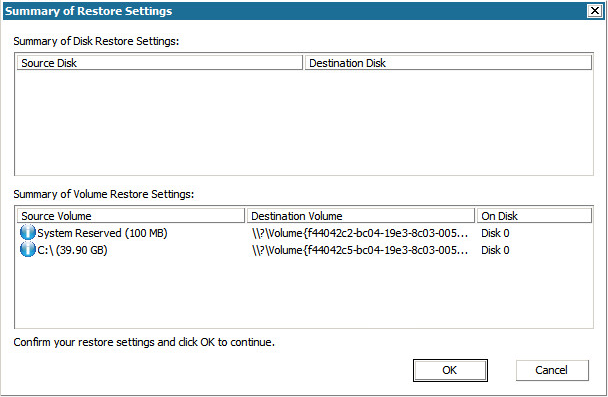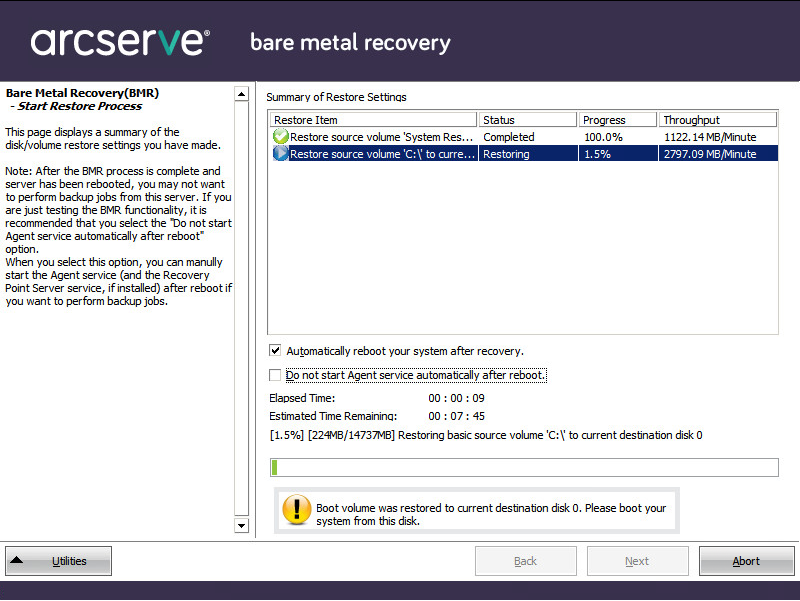

The Express Mode requires minimal interaction during the recovery process.
Follow these steps:
The Summary of Disk Restore Settings screen opens, displaying a summary of the volumes that are going to be restored.
Note: On the bottom of restore summary window, the drive letters listed in Destination Volume column are automatically generated from the Windows Preinstallation Environment (WinPE). They can be different from the drive letters listed in Source Volume column. However, the data is still restored to proper volume even if drive letters are different.

The restore process starts. The BMR wizard screen displays the restore status for each volume.
Important: If you are performing an authoritative restore of an active directory after a BMR, you must uncheck the option Automatically reboot your system after recovery and for more information, see How to Perform an Authoritative Restore of an Active Directory after a BMR.

By default, the Activity Log is saved to the following location:
X:\windows\system32\dr\log.
Note: To avoid getting a Windows-generated error, do not save the Activity Log on your desktop or create a folder on your desktop using the Save As option from the BMR Activity Log window.
You can browse and select drivers to inject to the recovered system so that even if you are recovering to a machine with dissimilar hardware, you can still bring back the machine after BMR.
|
Copyright © 2015 |
|